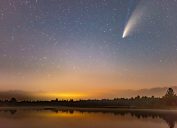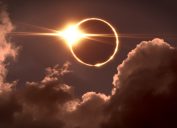25 Solar Eclipse Facts That Will Blow Your Mind
Brush up on this natural phenomenon ahead of next month's exciting event.

Many of already have April 8 marked on our calendars this year, as we prepare for one of nature's most fascinating phenomena: a total solar eclipse. This occurs when the Moon passes between the Sun and the Earth, completely blocking the Sun's light and causing the Moon's shadow to sweep across the planet. According to NASA, it is estimated that 31.6 million people throughout North America will be able to see next month's total solar eclipse—making it quite a spectacle for such a rare event. You don't want to miss it—the next one you'll be able to see from the U.S. will be in 2044—but while you're waiting, check out these 25 fascinating solar eclipse facts.
RELATED: What Really Happens to Your Eyes If You Look Directly at a Solar Eclipse.
1
Helium was discovered during a solar eclipse.

You've almost certainly used helium to blow up balloons. But did you know you have solar eclipses to thank for the discovery of this natural element?
French astronomer Pierre Janssen was the first person to observe helium (even before it was named as such) during a total eclipse that passed over Guntur, India, on Aug. 18, 1868, according to the American Physical Society (APS).
2
Bees take a break during a total solar eclipse.

Discoveries during solar eclipses haven't stopped. During the last total solar eclipse that hit the U.S. in 2017, over 400 scientists set up monitoring stations to determine how bees behave amid this natural phenomenon. Their research, which was published in the Annals of the Entomological Society of America, revealed that almost all bees stop flying and go completely silent during a total eclipse.
"We had not expected that the change would be so abrupt, that bees would continue flying up until totality and only then stop, completely," lead researcher Candace Galen, PhD, professor of biological sciences at the University of Missouri, said in a statement. "It was like 'lights out' at summer camp! That surprised us."
3
You might hear owls hooting.

Solar eclipses don't just affect bees. This type of event tends to confuse a lot of animals—especially those that are normally nocturnal, like most owls.
Kate Russo, a 44-year-old author, psychologist and eclipse chaser who has seen 10 total solar eclipses, told Mic that you may be able to "hear owls hooting" during a total solar eclipse.
"They act like it's nighttime and, when it all stops, they act like it's daytime all over again," she explained.
RELATED: 81 Weird Animal Facts Everyone Should Know.
4
One U.S. city will have experienced both the 2017 and 2024 total solar eclipses.

The relatively unknown college town of Carbondale, Illinois, has been dubbed the "Solar Eclipse Crossroads of America" for a special reason. This is the only city in the U.S. that was in the path of totality for the last total solar eclipse in 2017 that will also find itself in the path of totality for the next total eclipse this April, according to LiveScience.
5
The rarest type of solar eclipse is a hybrid solar eclipse.
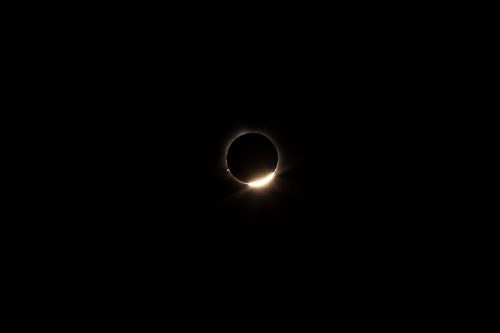
Total solar eclipses are often referred to as "rare" events—and while that's relatively true, they are not the rarest type of solar eclipse out there. That title belongs to the hybrid solar eclipse, per the National Weather Service (NWS).
As EarthSky explains, a hybrid eclipse is a type of solar eclipse that either looks like an annular solar eclipse or a total solar eclipse depending on where someone is looking at it along the central eclipse path. But it only happens roughly once per decade, because both the Moon and Sun's distance to Earth have to be just right for this hybrid phenomenon to occur.
RELATED: 8 Best Destinations for the Next (and Rare) Total Solar Eclipse.
6
Solar eclipses were thought to be a bad omen in ancient Greece.

While many people now travel just for a chance to see a solar eclipse, this natural phenomenon didn't elicit the same kind of excitement back in the day. In ancient Greece, people thought solar eclipses were a bad omen, and a sign that the gods were angry.
The word "eclipse" itself actually comes from the Greek word "ekleipsis," which means "being abandoned," according to experts at the University of Dallas.
7
A total solar eclipse once ended a war.
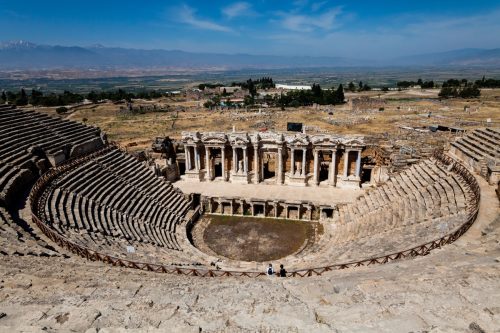
This ancient belief was actually able to bring a five-year war to an end. Greek historian Herodotus reported that a total solar eclipse on May 28, 585 B.C., created an unexpected ceasefire between the Lydians and the Medes who had been fighting for control of Anatolia (modern-day Turkey), according to the History Channel.
The soldiers interpreted the eclipse—which occurred during the Battle of Halys—as a sign that the gods wanted their conflict to end, so they withdrew their weapons and negotiated a truce.
8
Solar eclipses can disrupt certain electronics.

You might have to change your radio station or pull out a physical map during a solar eclipse. This event can cause ionospheric anomalies that may "disrupt radio signals and GPS navigation systems, affecting communication and navigation over the affected regions," NASA explains.
9
They also have an effect on the temperature.

No matter how warm it may be on the day of a solar eclipse, the sudden disappearance of the Sun typically causes a drop in the temperature. In fact, retired weatherman and meteorologist Gib Brown recently told the Adirondack Explorer that he believes the next total eclipse could trigger a decline by as much as 10 degrees.
"I'm thinking that we'll see something that we can measure, something that may be relatively dramatic," Brown said. "But beyond just the few minutes or so of the eclipse, the temperatures should rebound fairly quickly as the eclipse goes by."
RELATED: 54 Hilarious and Random Facts You'll Want to Tell Your Friends.
10
King Henry I died during a total solar eclipse.

While solar eclipses have been connected to history in many ways, the most famous total solar eclipse in history occurred in 1133, according to NASA's website.
King Henry I of England died during the event that lasted over four minutes on Aug. 2 of that year. Referred to as the "hideous darkness agitated the hearts of men," this eclipse kickstarted a massive civil war, as the country fought over the throne.
11
There can only be five solar eclipses at most in one year.

At least two solar eclipses happen somewhere on Earth every year, according to NASA. But did you know that there is also a maximum number of solar eclipses that can occur annually as well? Whether partial, annular, total, or hybrid, there can only be five solar eclipses each year.
12
Colors can look different before and after a total solar eclipse.

Curious about how colors change during solar eclipses? Local Cleveland astronomer Jay Reynolds told WJW that various "odd visual effects" can occur both before and after a total solar eclipse, and that includes a clear shift in color saturation.
"For instance, colors like red will lose their brilliance and appear faded," he said.
RELATED: Why You Shouldn't Wear Black, White, or Gray During the Eclipse, Science Says.
13
The longest total solar eclipse was 7 minutes and 28 seconds.
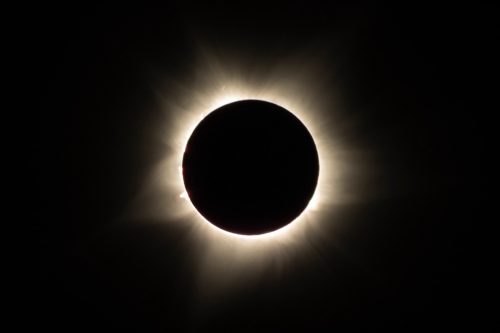
A total solar eclipse can last anywhere from 10 seconds to about 7.5 minutes, according to NASA. The longest totality on record so far occurred on June 15, 743 B.C., and lasted for 7 minutes and 28 seconds.
The next total solar eclipse expected to break this record won't come until July 16, 2186, when the totality will last for 7 minutes and 29 seconds.
14
The shortest total solar eclipse was just nine seconds.

On the other hand, the shortest total solar eclipse on record didn't even break the purported totality minimum. This happened on Feb. 3, 919, when totality lasted for a mere 9 seconds.
15
One eclipse chaser spent 50 years being bested by weather.

Solar eclipses have created a phenomenon called "eclipse chasing," where people will travel around the world just to try to catch these rare events. Unfortunately, one notable eclipse chaser found fame for how unlucky he was.
Canadian astronomer and professor J.W. Campbell, who wrote a textbook about predicting eclipses, traveled for more than 50 years on expeditions centered around seeing 12 different solar eclipses, LiveScience reported. But it is said that he ended up running into overcast weather each time, experiencing cloudy skies instead of any eclipse.
16
Certain clouds disappear during solar eclipses.

While overcast skies are certainly a real concern during solar eclipses, you can count on one type of cloud to move out of the way.
New research published in the Communications Earth & Environment journal showed that cumulus clouds start disappearing when just 15 percent of the Sun gets covered, and they stay away until the eclipse is over.
RELATED: 40 Ocean Facts That Will Blow You Out of the Water.
17
Other planets experience solar eclipses.
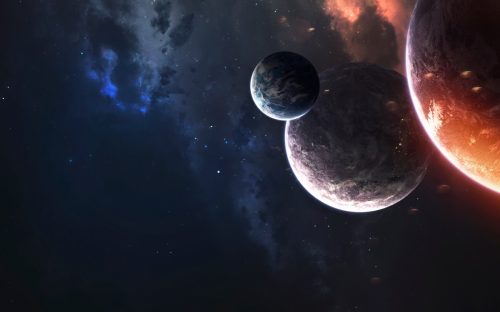
Some people claim that Earth is the only planet that has solar eclipses. But that's not true. Other planets in the solar system can experience this natural event, and scientists say that some planets' eclipses, like those on Saturn, may be able to rival those we see on Earth.
18
Solar eclipses can mess with the wind.

Solar eclipses don't just cover the Sun's light and bring down temperatures. They can also mess with the wind, slowing it down and causing it to change direction entirely, according to EarthSky.
19
A solar eclipse can also make unusual shadows.
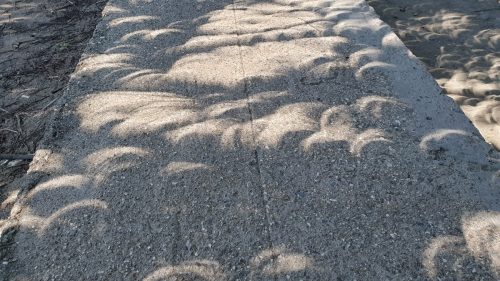
Another weird impact from solar eclipses is a phenomenon known as shadow bands. Sometimes referred to as "snake shadows," these are "thin wavy lines of alternating light and dark that can be seen moving and undulating in parallel on plain-coloured surfaces immediately before and after a total solar eclipse," according to NASA.
20
Many solar eclipses happen over the ocean.
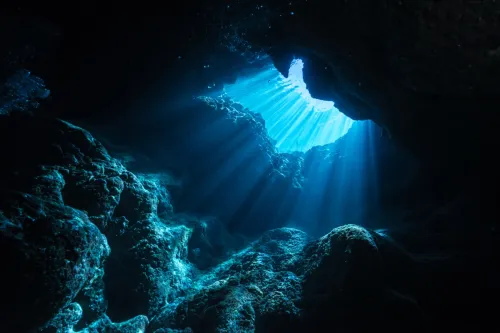
It's not always easy to see solar eclipses, even if you're able to travel as an "eclipse chaser." Since two-thirds of Earth is made up of water, many eclipses end up occurring over the ocean and away from actual human visibility, according to the National Solar Observatory (NSO).
21
Other planets can become visible during total solar eclipses.

The darkness brought on by a total solar eclipse may bring out the brightness of other stars and planets in the sky. For instance, during the 2017 event, people could see four planets with their naked eyes near the eclipsed Sun: Venus, Jupiter, Mars, and Mercury.
Mercury, Venus, and potentially Jupiter could be visible during the April 8 eclipse, per Great American Eclipse.
22
Solar and lunar eclipses happen in pairs.
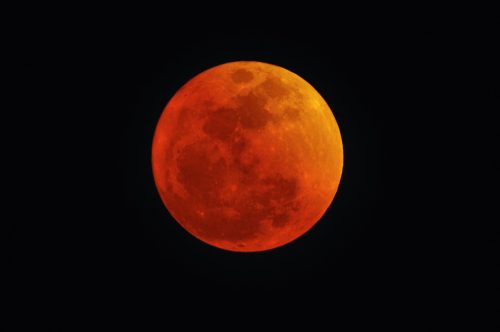
A lunar eclipse is set to happen in late March, shortly before the solar eclipse. That's because solar and lunar eclipses always come in pairs, according to EarthSky. One usually follows the other within about two weeks, and sometimes, three eclipses can occur in one eclipse season.
RELATED: 39 Facts About Storms That Will Make You Run for Cover.
23
Solar eclipses can damage your eyes without you realizing it.

Experts are serious when it comes to their guidance about wearing protective glasses when trying to look at a solar eclipse. You might think their advice is a exaggerated, but you can actually go blind if you try looking at the Sun directly at any moment other than the brief period of totality.
In a Reddit thread, NASA astronomer Bill Cooke, PhD, warned others about his own mistake during a solar eclipse.
"You should never look at the sun without protection! You can damage your eyes without feeling pain," he wrote. "I know because I have a scar on my retina from not getting my eye protection back on at the end of totality during the 1979 eclipse. Please don't follow my example!"
24
Einstein's Theory of General Relativity was proved by a total solar eclipse.

Albert Einstein published his theory of general relativity in 1915, but many scientists remained skeptical about it until two years later.
In 1919, two team of astronomers set out to test Einstein's theory during a total solar eclipse. After several months of analysis, they revealed that their findings verified the theory of general relativity, making Einstein a science celebrity, according to Britannica.
25
Eventually there will be no more total solar eclipses.
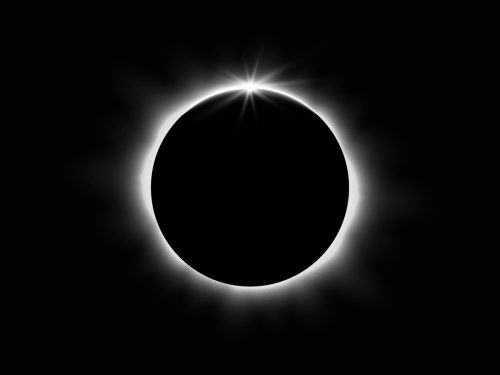
From ending a war to the discovery of helium to Einstein's celebrity status, total solar eclipses have changed history in more ways than most people realize. But one day, this natural phenomenon will be a thing of the past.
As NASA explains, the Moon has slowly been drifting farther away from the Earth, at a rate of about 1.5 inches per year. Once it passes 14,600 miles, it will no longer appear big enough from Earth to cover the Sun.
Of course, we'll be long gone before then happens: Experts say it'll take another 600 million or more years before the planet will no longer experience total solar eclipses.
- Source: NASA: How the 2024 Total Solar Eclipse Is Different than the 2017 Eclipse
- Source: APS: August 18 and October 20, 1868: Discovery of Helium
- Source: Pollination on the Dark Side: Acoustic Monitoring Reveals Impacts of a Total Solar Eclipse on Flight Behavior and Activity Schedule of Foraging Bees
- Source: NWS: Solar and Lunar Eclipses
- Source: NASA: The Impact of Solar Eclipses on the Structure and Dynamics of Earth’s Upper Atmosphere
- Source: NASA: Eclipse 101
- Source: NASA: Eclipse in a Different Light
- Source: NASA: Eclipses: Frequently Asked Questions
- Source: Communications Earth & Environment: Clouds dissipate quickly during solar eclipses as the land surface cools
- Source: NASA: Exploring Shadow Bands
- Source: NSO: Eclipse Science
- Source: CESAR: Solar Observatory
- Source: NASA: Eclipses
